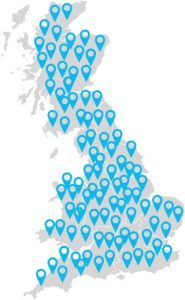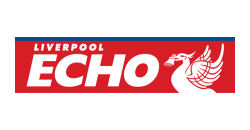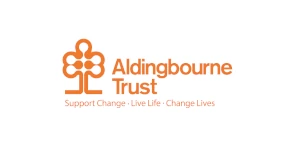Sell A Broken Car For Parts
Selling a damaged or broken car for spares and repairs wasn’t always easy, but Scrap Car Comparison has made it so! Sell your car for parts with our quick, simple and FREE online service!

Sell For Parts
You can sell your car for parts no matter how broken it may be! Our buyers are keen to take your car off your hands to salvage it for spares and repairs, keeping the process speedy and hassle free.

Top Prices Paid
Get a fair, competitive price in a flash when selling your damaged car for spare parts. Our expert team knows how to price damaged cars so you the best deal possible.

Free Collection
Our network spans the whole of the UK, so wherever you are and whenever you’re selling your vehicle for parts, it will be collected and removed without costing you a single penny.
 Who is Scrap Car Comparison?
Who is Scrap Car Comparison?

We deal with over 150,000 inquiries every month
We’ve removed over 38,000 tonnes of vehicles from the road
We’ve offered over £275m for cars since the company began
Testimonials
⭐⭐⭐⭐⭐
“From start to finish flawless. Excellent customer service. Would highly recommend if you are are suddenly in the position of needing to dispose of a damaged car.” – Alison
⭐⭐⭐⭐⭐
“The whole process of disposing of my damaged car was stress-free using Scrap Car Comparison. They provided me with the highest offer very quickly and efficiently. I have no hesitation in recommending them” – Alan
⭐⭐⭐⭐⭐
“Everything went very smoothly. Very helpful throughout. I had been concerned as to how to dispose of my bodywork damaged car. As the damage repair cost was more than the cars value. I was happy with the price, but the ease and convenience earns 5 stars.” – Mr. B
 We’ve Been Featured In
We’ve Been Featured In
 Step by step guide
Step by step guide
1: Get an instant quote
All you need to do is submit your vehicle’s registration number and your postcode using our online form. Using those basic details, we’ll find you the best price on offer for your car. Initially, the price you’re offered will be a scrap value. However, with a few more details, we can get you a salvage value – this price takes into account the value of the spare parts a buyer could harvest from your vehicle
2: Provide more details
Our friendly team will be in touch shortly to gather up a bit of extra information about the condition of your car. The info you provide here will allow our team to build up an accurate picture of how damaged your car is, and which parts might be reusable. If you think your car is suited for salvage and could be sold for spares and repairs, you could get a much better offer!
3: Accept an offer
Next up, it’s time to accept your offer – if you’re happy with it, of course! Broken, damaged vehicles come through our system all the time, so every Authorised Treatment Facility that we work with will be fully capable of disposing of your car properly. That means recycling the destroyed parts and retrieving spare parts that are still in good condition.
4: Arrange collection
We’re partnered with a huge network of damaged, broken and ‘spares & repairs’ vehicle buyers who are fully authorised to dispose of your car. They’re also equipped to collect your car from you once they’ve bought it! You won’t need to stress over transporting your old motor, nor will you need to worry about any cash being deducted from what you’re owed – collection is always FREE
Sell Your Broken Car For Parts With No Hassle
Here at Scrap Car Comparison, with our expansive network of specialists, we can ensure a sale for your broken car no matter what damage it has suffered. Not only are we experts in our field in terms of finding buyers for damaged or crashed cars, we only work with experts when it comes to who we sell the cars to.
We can secure you a sale for any of the following types of damaged car
- Accident damaged
- Insurance write-offs
- Non-starters, or non-running
- Mechanical and electrical failures
- Cars sold for parts
What happens if my vehicle is too good for scrap?
If you’re looking at a car that’s maybe only just failed its MOT or that can be back on the road with a little work that you just can’t commit to, you might be thinking that sending it to the scrap pile might be a step too far.

That’s where we come in! Almost 40% of all vehicles we process are actually sold as salvage, rather than scrap. This means your car will be sold and either used as spare parts or repaired itself and put back on the road. In almost all cases, salvage vehicles fetch a much higher price than their scrap equivalents, so while your car might be too good to scrap, never rule out a potential salvage sale!
To find out how much your car could be worth as a salvage vehicle, pick up the phone and speak to one of our advisors today. They’re experts in this field and will be more than happy to talk you through every step of the process.
How Do I Receive Payment For My Car?

Payment terms vary from buyer to buyer, but in most cases you will receive instant payment upon collection. The majority of our buyers pay via instant bank transfer. The safety of our customers is paramount and, in line with the Scrap Metal Dealers Act 2013, our buyers will not make payments in cash for vehicles destined to be scrapped or dismantled.
Will Salvaging My Car Impact The Environment?
It’s a common thought when you scrap your vehicle that your vehicle gets put into a crusher, turned into a cube and the metal is melted to be made into more cars; however, the process is a lot more intricate than that. Below you can see just how many different ways your car will be recycled once it’s scrapped.
Scrapping cars has a balanced impact, as whilst taking cars with dangerous emission levels off the road is positive for the environment, it also uses energy to recycle those vehicles.
Find out more about how your old car is recycled here.

Support Charities When You Sell Your Car With Us
We’re proud to say that here at Scrap Car Comparison we have raised hundreds thousands of pounds for a wide range of charities through our Donate A Car scheme. Our scheme allows you to get rid of your old, damaged or unwanted vehicle and give the profit you make to our chosen charity partners, and you can choose to donate as much or as little of your sale as possible. With partners ranging from local charities to major national and international causes, not only can you get rid of your troubled vehicle, but you can help others in need at the same time.
 Charities we’ve worked with
Charities we’ve worked with
Our Collection Locations

We’ve made over 100,000 collection across the UK.
Scrap Car Coverage in Your Area
 Articles
Articles

Find out The Value Of My Car
Find out the salvage value of your car with our value calculator. Instant free valuation online.
What documents do I need to sell my car for salvage?
Let us guide you through all of the paperwork and everything else you may need to sell your broken old car


How to find out if a car has been scrapped
We give you a step-by-step guide on how to find out if a car has been scrapped, and how to look out for a car with hidden history.
Selling a broken car a car without the V5C logbook
Haven’t got your V5C? Let us guide you through the process even if you haven’t got your car’s logbook.

























